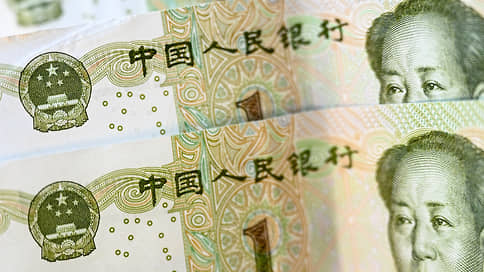The shortage of yuan has worsened in the Russian financial market
[ad_1]

Against the backdrop of a shortage of yuan in the market, the Central Bank began to actively conduct currency swap transactions with banks. Since the beginning of the year, their volume has amounted to 35.7 billion yuan, while for the entire last year it did not exceed 60 billion yuan. Currency swap rates in recent days have exceeded 4% per annum, which is several times higher than at the beginning of the year. The shortage of yuan liquidity will persist, market participants believe, against the backdrop of a reduction in sales of the Central Bank, growing demand from importers and sanctions-related restrictions from Chinese banks.
In recent days, the Russian market has faced a significant decrease in yuan liquidity. This is evidenced by the high swap rate in Chinese currency (the difference in ruble and yuan rates). According to Kommersant’s estimates, based on data from the Moscow Exchange, on February 6, the one-day yuan swap rate was 5.3% per annum, which is almost 0.5 percentage points (pp) higher than the values on February 5. This year, the indicator was higher only on two occasions – January 31 (8.6% per annum) and January 22 (6.6% per annum). At the same time, the current rate is more than 4 percentage points higher than the values at the beginning of the year (1%).
Against this background, the volume of currency swap transactions with the Bank of Russia increased: on February 5, the volume of such transactions exceeded 4.2 billion yuan (equivalent to 53 billion rubles).
Since the beginning of 2024, the regulator has carried out such transactions 13 times for a total amount of 35.7 billion yuan (443 billion rubles), while over the entire last year such transactions were carried out 28 times for only 60 billion yuan (728 billion rubles).
The Central Bank also works through the Moscow Exchange, and everyone who has access to it “can interact with it in the market order,” notes Vladimir Bykov, head of the treasury department of Sovcombank. However, the Bank of Russia’s application, unlike the market, is formed based on predetermined conditions. When calculating the swap difference, the overnight rate of the Shanghai Exchange (SHIBOR), increased by 2.5 p.p., is taken as the interest rate for yuan; for rubles, the key rate of the Central Bank, decreased by 1 p.p. market rates were lower than the Central Bank rate, which remained in the range of 3.5–5%, and this year it is 4.1–4.5%.
According to the head of the analytical department of Zenit Bank, Vladimir Evstifeev, there is an “episodic shortage of yuan in the market due to a local surge in demand for the Chinese currency, for example, as part of the financing of foreign trade transactions.” Also, in general, the interest of banks in lending in friendly currencies is growing. As Dmitry Gritskevich, manager for analysis of the banking and financial markets of PSB, notes, in the fourth quarter lending in friendly currencies increased by 401 billion rubles: “Accordingly, the demand for yuan liquidity from banks is growing.”
The deterioration in yuan liquidity may also be due to the difficulty of repatriating export proceeds, says Renaissance Capital currency trader Mikhail Rodichkin.
Market participants add that after the December sanctions, Chinese banks began to limit settlements. “It is possible that this is due to the growing risk of secondary sanctions for liquidity providers and yuan infrastructure,” explained a Kommersant source in a Russian bank (see “Kommersant” dated January 17).
The situation is also reflected in the debt market. Since the beginning of the year, there have been two placements of yuan bonds – Metalloinvest (400 million CNY) and Rusal (1 billion CNY). Coupon rates for these issues increased compared to autumn 2023 by 0.15 and 0.5 percentage points, respectively. “It should be understood that the issuance of corporate bonds in yuan is carried out mainly at the request of the banks buying the securities. Now banks have a moderate short position in the Chinese currency, which they close on the swap market,” notes Alexey Bulgakov, head of the debt market analytics department at Renaissance Capital.
In the near future, one should not expect a decrease in demand for yuan, and therefore a reduction in rates, says Vladimir Bykov. The liquidity situation could be aggravated by a reduction in the sale of yuan by the Central Bank. “The activity of importers is traditionally low in January, but by spring it increases, which can strengthen local demand for foreign currency,” notes Vladimir Evstifeev. “At the same time, export volumes, on the contrary, seasonally decline in the second and third quarters of the year, reducing the influx of foreign currency into the country.” .
[ad_2]
Source link





